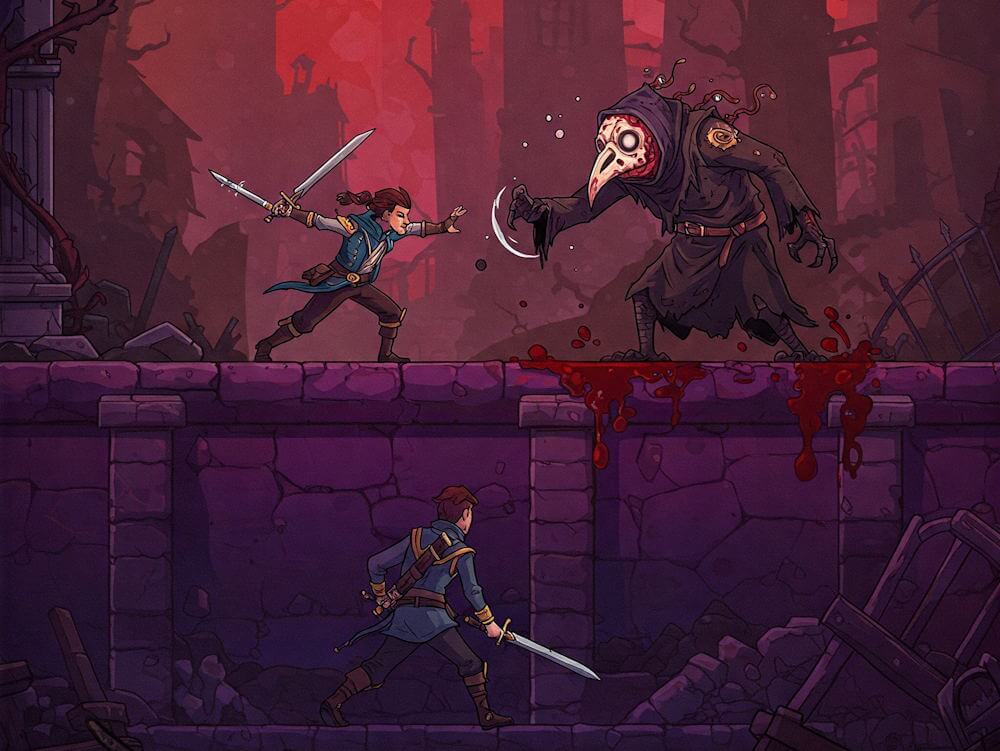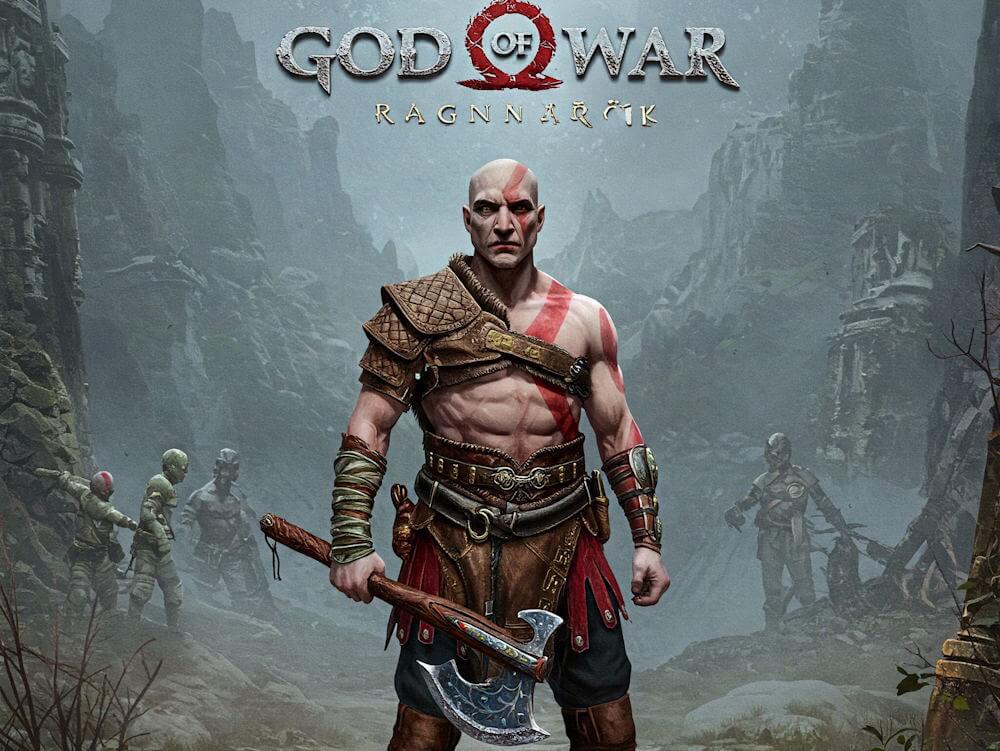Thymesia is an action role-playing game (RPG) that has recently captured the attention of gamers and industry professionals alike. Developed by OverBorder Studio, this title draws significant inspiration from the renowned Soulslike genre, known for its challenging gameplay, intricate level design, and complex storytelling. The increasing popularity of such games has set high expectations for Thymesia, as players anticipate a fresh experience that retains the core aspects of what makes Soulslike titles appealing.
The historical development of Thymesia reveals a commitment to creating a unique yet familiar experience. The game is set in a dark, plague-ridden world where players assume the role of Corvus, a character imbued with extraordinary abilities. This character design is reminiscent of other iconic figures in the Soulslike landscape, engaging players right from the start. Nevertheless, the developers have strived to introduce unique mechanics, thereby carving out a distinct identity for Thymesia amidst other entries in the genre.
As players dive into Thymesia, they can expect an engaging narrative that unfolds through exploration and discovery. The story intertwines themes of loss, power, and redemption, offering a rich backdrop that motivates players to delve deeper into the game’s mechanics and lore. Initial player expectations are high not only for a challenging gameplay experience but also for the depth of storytelling that has become a hallmark of successful RPGs in recent years. Thymesia aims to satisfy both casual gamers and hardcore fans, merging intense combat with immersive world-building, which reflects the evolving standards of the action RPG genre.
The Game’s Unique Mechanics
Thymesia presents a variety of unique gameplay mechanics that distinguish it within the ‘Soulslike’ genre, primarily through its innovative plague weapon system and intricate health management. One of the standout features is the ability to utilize plague weapons, which allow players to unleash powerful and strategic attacks. By absorbing deadly plagues from defeated enemies, players can transform these afflictions into weapons that enhance their combat capabilities. This mechanic not only adds depth to combat but also encourages players to engage with enemies strategically, seeking to exploit their weaknesses and adapt their arsenal accordingly.
Health management in Thymesia is another critical aspect that intertwines seamlessly with its combat mechanics. Unlike traditional health recovery systems, players must tactically decide when and how to heal, as the recovery mechanics are designed around the game’s rhythm. Understanding when to heal, combined with dodging enemy attacks, creates an intense and engaging experience. Players must balance aggression with caution, as healing abandons offensive pressure and can leave them vulnerable to attacks. This high-stakes system fosters a sense of urgency and decision-making that is essential in navigating through the challenging environments.
Additionally, the combat techniques available in Thymesia contribute to its distinctive gameplay. Players can experiment with a variety of offensive maneuvers, relying on a mix of melee and ranged attacks, allowing for a personalized combat style. The game encourages skill development through timing-based parries and counters, which are crucial for overcoming formidable foes. Such techniques enhance player engagement, compelling them to master the combat system rather than relying solely on brute force. Ultimately, these mechanics not only create a unique combat experience but also integrate smoothly into the traditional ‘Soulslike’ framework, making Thymesia a compelling game that invites players to delve into its intricacies.
Art Style and Atmosphere
The art style of Thymesia is one of its most striking features, serving as a pivotal element in establishing the game’s dark and immersive atmosphere. The visual direction draws inspiration from gothic and horror influences, resulting in a world saturated with depth and detail. Each environment is meticulously crafted, showcasing a blend of decaying architecture and unsettling landscapes that reflect the game’s overarching themes of disease and decay. The somber color palette, dominated by shades of grey, muted greens, and deep blues, effectively conveys a sense of dread and desperation that envelops players from the outset.
Character designs in Thymesia further enhance the game’s ominous tone. The protagonists and enemies alike are depicted with an array of grotesque features and intricate costumes that reveal their tragic backstories. The animations and movements of these characters exude a fluidity that contributes to the overall immersive experience, allowing players to feel connected to the struggle against the nightmarish foes that lurk in the shadows. The art direction embodies a unique aesthetic that seamlessly integrates with the gameplay mechanics, providing players with visual cues that inform their strategies during combat.
The atmospheric elements of Thymesia augment its storytelling, with sound design playing an integral role in setting the mood. The haunting musical score, combined with ambient sounds like distant screams and the rustling of the environment, intensify the feelings of isolation and tension. This melding of visual and auditory components creates a cohesive experience, ensuring that players are not merely observing a game, but are instead plunged into a living nightmare where every encounter holds profound significance.
Story and Themes
The narrative of ‘Thymesia’ is intricately woven into its gameplay, offering players an immersive experience enriched by a compelling story. Set in a dark, plague-ridden world, players are thrust into a kingdom that has succumbed to chaos, where the boundaries between humanity and monstrosity are tested. The protagonist, a mysterious character named Corvus, possesses the unique ability to wield the powers of the plague, creating a complex relationship with the very affliction that plagues the land. As players navigate through this treacherous world, the story unfolds, revealing the consequences of the epidemic that has ravaged the population.
The exploration of humanity is a central theme within ‘Thymesia.’ As Corvus battles against grotesque beings, there is an underlying question of what it means to be human in a world overtaken by despair. The game prompts players to reflect on the moral dilemmas surrounding the use of power and the impact of choices made in dire circumstances. This thematic depth serves to connect players emotionally to the narrative, making their journey through the game’s trials not only a test of skill but also an exploration of ethical boundaries. Players are continually faced with decisions that affect both their gameplay experience and the unfolding story, enhancing the connection between player agency and narrative progression.
Moreover, the oppressive atmosphere of the setting amplifies these themes, as every corner of the plague-infested kingdom serves as a reminder of loss and decay. The rich lore combined with the grim aesthetics creates a haunting environment where players are encouraged to delve deeper into the story. Ultimately, ‘Thymesia’ is not just a game of combat and strategy; it is a poignant exploration of human nature, societal collapse, and the moral struggles that arise in the face of adversity. The interlinking of narrative and gameplay ensures that players remain invested, driving them to uncover the secrets hidden within the shadows of this dark world.
Character Customization and Development
In “Thymesia,” players are presented with a rich tapestry of character customization options that cater to a variety of playstyles and preferences. At the outset, players can choose from multiple character traits that influence their abilities and performance in battle. These traits are designed to provide a foundation for how players will engage with the game, allowing for a high degree of personalization. The initial choices set the stage for unique gameplay experiences, reflecting the individuality of each player.
As players progress through the game, they will encounter a deep skill progression system that allows for extensive character development. This system enables players to acquire various abilities that can be honed to fit their preferred combat style, whether it be aggressive melee combat or strategic ranged attacks. The ability to unlock and upgrade skills not only enhances a character’s capabilities but also allows for the exploration of different tactics throughout the game. Players can choose to specialize in certain abilities, creating a personalized build that may include stealth, direct confrontations, or a combination of both.
Furthermore, the choices made during character development have tangible impacts on gameplay strategy. For instance, selecting skills that boost healing abilities may encourage a more cautious and defensive playstyle. In contrast, opting for high-damage, high-risk skills can result in a faster-paced combat approach. This dynamic means the game offers varied experiences, allowing players to experiment and discover the most effective combinations for their unique challenges. The interplay between customization options and player decisions fosters a sense of agency, making each playthrough not just a repeat of the last but a fresh journey shaped by individual choices.
Comparative Analysis with Other Soulslike Games
Thymesia enters the challenging realm of Soulslike games, a genre popularized by titles such as Dark Souls and Bloodborne. Players familiar with these classic games will notice both familiar elements and distinctive features that set Thymesia apart. One of the most prominent similarities is the unforgiving difficulty that defines the Soulslike genre. Thymesia, like its predecessors, requires precise timing, strategic planning, and understanding of enemy patterns to succeed. Each encounter is fraught with danger, and the penalties upon death further contribute to the high-stakes atmosphere that fans anticipate in such games.
While Thymesia maintains the essential characteristics of challenging gameplay and atmospheric storytelling, it distinguishes itself through its unique combat mechanics and thematic elements. The use of plague and disease as central themes in Thymesia diverges from the more traditional medieval fantasy settings found in Dark Souls and Bloodborne. For instance, players will find themselves utilizing various plague-based abilities to incapacitate foes and heal themselves, introducing a fresh twist to combat mechanics. This innovative approach not only enhances the gameplay experience but also underlines the game’s identity within the genre.
Another difference lies in the art style and world-building. While Dark Souls and Bloodborne embrace gothic and somber aesthetics, Thymesia offers a more vibrant, albeit still grim, visual representation. The environments are meticulously crafted, reflecting the game’s rich lore and the challenges that lie within. Furthermore, the narrative depth found in Thymesia draws parallels with its predecessors, yet it offers new perspectives on themes of power and sacrifice that enhance its storytelling.
In conclusion, Thymesia appeals to players who appreciate the intricate designs and intense difficulties characteristic of the Soulslike genre. Those who have found enjoyment in Dark Souls and Bloodborne are likely to find a rewarding experience in Thymesia, filled with unique innovations that contribute to its place within this esteemed category.
Challenges and Rewards
Thymesia, much like its Soulslike predecessors, presents a formidable array of challenges designed to test the mettle of even the most seasoned players. The difficulty level is not merely a barrier but a carefully structured aspect of gameplay intended to enrich the overall experience. Players can expect a variety of encounters that require quick reflexes, strategic planning, and a deep understanding of the game’s mechanics. From formidable enemies to intricate boss battles, each challenge is an opportunity to learn and adapt, pushing players to improve their skills and refine their approach.
The game employs a unique combat system that emphasizes precision and timing, rewarding players who are willing to engage deeply with its mechanics. Players must master the art of dodging and parrying, utilizing the environment to their advantage. The varied enemy types, ranging from quick, agile foes to powerful, heavily-armored adversaries, ensure that no two encounters are alike. This diversity within challenges keeps the gameplay fresh and engaging, compelling players to experiment with different strategies and playstyles.
Moreover, overcoming these challenges yields substantial rewards, which significantly enhances player satisfaction. Defeating a formidable boss or successfully navigating a complex level provides a heightened sense of achievement. This sense of accomplishment is not merely about progression in the game but also about personal growth as a player. The game encourages perseverance, teaching that failure is often part of the journey. Every setback serves as a lesson, fostering resilience and a greater understanding of the gameplay dynamics.
In essence, the challenges in Thymesia are intricately tied to the rewards they offer, making each victory significant. This rewarding cycle of challenge and achievement is what makes the game a compelling experience for those who dare to conquer its trials.
Community Reception and Feedback
The initial reception of ‘Thymesia’ has generated considerable discussion within the gaming community, reflecting a diverse range of responses from players and critics alike. Many reviews emphasize the game’s striking art design and immersive world-building, elements that contribute to an atmospheric experience reminiscent of classic Soulslike titles. Players have praised the intricate enemy designs, fluid combat mechanics, and challenging gameplay that rewards patience and skill, mirroring the traditions established by its genre predecessors.
However, the game’s difficulty has also been a topic of contention. While many players relish the punishing challenge characteristic of Soulslike games, some reviewers have pointed out that the difficulty spikes may deter newcomers who are less accustomed to the intense learning curve. The balance between formidable opposition and player progression is critical, and some feedback indicates that this balance may require further refinement in future patches or updates.
Critics have also noted the game’s narrative elements. Although some players appreciated the lore and backstory interwoven into the gameplay, others felt that the storytelling was somewhat lacking in depth, leaving certain plot points and character motivations underexplored. This dichotomy illustrates the varying expectations among players, as some prioritize rich narratives over gameplay mechanics or vice versa.
Furthermore, the community’s feedback highlights an eagerness for more content and updates post-launch, including additional challenges and lore expansions. Overall, ‘Thymesia’ has sparked lively discussions regarding its merits and shortcomings, reflecting both commendation for its artistry and gameplay alongside constructive criticism for its narrative and accessibility. The responses gathered from the gaming community serve as a crucial gauge of the impact ‘Thymesia’ has within the landscape of contemporary Soulslike games.
Final Thoughts: Is Thymesia Worth Your Time?
In examining the overall experience offered by Thymesia, it is clear that this game has carved out a distinctive niche within the soulslike genre. One of the standout features of Thymesia is its striking visual design, which immerses players in a dark, plague-infested world. The character and environment designs are both intricate and engaging, enhancing the overall atmospheric experience. Furthermore, the gameplay mechanics are thoughtfully crafted, enabling players to engage in a fluid combat system that rewards strategy and precision. This aspect is particularly appealing to veterans of the genre, offering a challenging yet satisfying experience.
However, Thymesia is not without its shortcomings. Some players have noted that the narrative lacks depth, which could detract from the overall immersion for those who prioritize storytelling in their gaming experience. Additionally, the game’s pacing can occasionally feel uneven, with some areas presenting a more frustrating challenge than intended. While the design choices contribute to the unique charm of Thymesia, they may not resonate with every player. The combination of these strengths and weaknesses prompts a balanced evaluation of the game.
Ultimately, whether Thymesia is a worthy addition to a collection depends largely on individual preferences. Gamers who appreciate challenging gameplay, atmospheric worlds, and engaging combat mechanics are likely to find considerable enjoyment in Thymesia. Conversely, those who favor rich narratives and smoother pacing may feel less satisfied with the experience. In conclusion, Thymesia stands out as a commendable entry in the soulslike landscape, making it worth considering for fans of the genre and those seeking a unique gaming experience.




